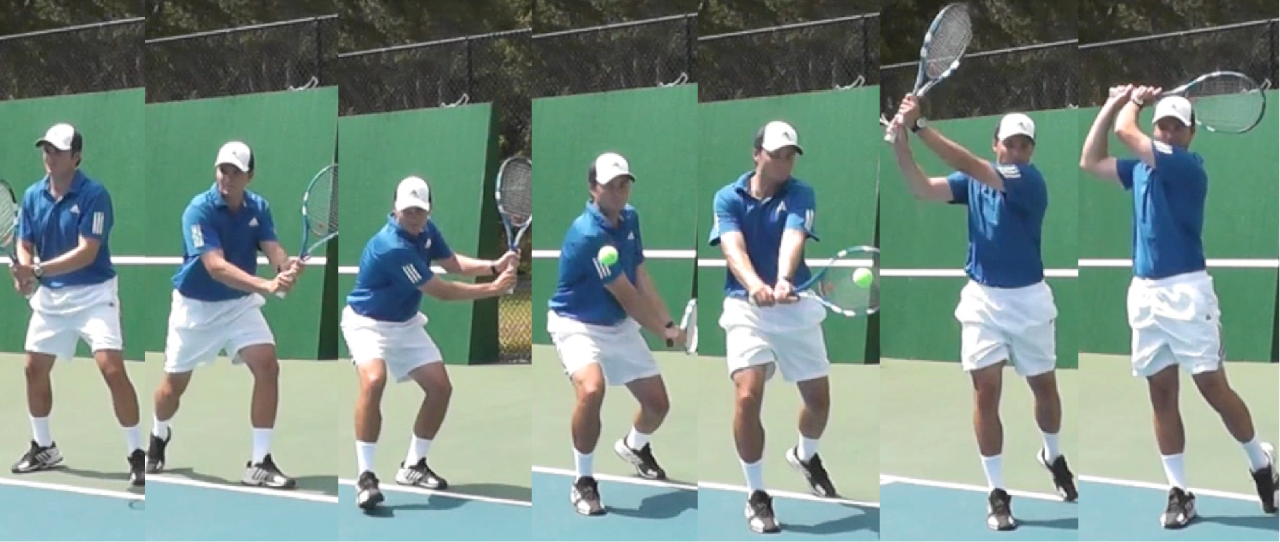The Two Handed Backhand Groundstroke
“The art is in where you start”. It’s important to remember the basics when it comes to stroke production. There are three components to consider when working on strokes: the grip, the swing and the body.
For young kids starting out in the game it is best to start with a two-handed backhand. The most important reason is strength. It’s much easier to control the racquet with two hands versus one. When working with a young beginner it is difficult to determine if that kid will one day stick with a two-handed backhand or go on to develop a one-handed backhand. For that reason is imperative that they start with the correct grips. We label the grips accordingly using the number system as the diagram illustrates.

The grip
You should have players start with their right hand on the right side of 1 and their left hand on the middle of L3 (3 for a lefty), which would be an eastern forehand grip. You find your grip using the heel pad and base knuckle as reference points and aligning them along the desired panel(s).
By using a backhand grip versus a continental grip it not only makes it easier for the players to keep their arm relatively straight at contact but it also makes it an easier transition if the player decides to change to a one-handed backhand. In doing this they will not have to learn a new grip nor will they have to adjust their wrist and learn a new wrist position. There is a direct relationship between power and the radius of the swing (distance from the body). Having the arm relatively straight at contact will result in a longer radius so that more power will be transferred into the shot.


The swing
You want the swing to resemble the shape of a Ferris wheel to generate topspin and also to allow the longest possible hitting zone with the strings going out to your target. You also want the hand to start closer to your body and then be further away from your body at impact, if viewed from above and tracked, the hand would resemble a figure of eight from the turn and then a larger bulge through contact.
It’s important to note that the two-handed backhand is essentially a left-handed forehand for a right-handed player, meaning that the non-dominant arm generates most of the power. Eventually players may evolve to a grip close to 2/continental with the right hand.
The body
You want a ground reaction force. The power starts from the ground and moves up, the body lifts at the hit transferring the energy into the shot and also generating more racquet head speed which translates into more spin. At the same time you want your head to stay down by focusing your eyes down at the point of contact until you complete the stroke.
The body and racquet should work together mirroring one another – when the racquet drops so does the body and then they lift upward together generating, end over end, downward rotation on the ball – topspin.

From left to right:
1. Ready Position – Right hand on R3, left hand on L3
2. Unit Turn – Racquet on edge, right arm relatively straight, left elbow bent and raised. Right hand on right side of 1, left hand on L3
3. 3 Point Landing – Sitting in the chair, body and racquet in sync with each other, racquet is slightly closed in the slot position
4. Contact Point – Eyes focused at impact, body has lifted, racquet face is vertical
5. Finish – Weight transfer is forward ending up on the back toe, racquet points slightly left
